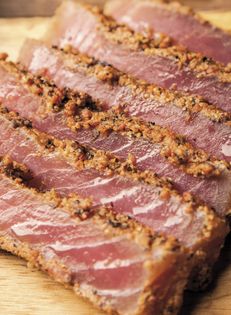Advertisement

Preparation info
- Makes about
5 pounds
- Difficulty
Medium
Appears in
By Peter Sherman and Stephanie Banyas
Published 2019
Even though cows have bellies—and you can use a cut that is referred to as the navel—it is really hard to find for the home cook, so I use brisket. When smoking brisket, plan on shrinkage of about 30 percent. The pink salt and additional days of curing, in addition to the smoking, add a richness and concentrated beef flavor to the meat. It’s what separates this brisket from your Texas-style or Jewish holiday–style brisket, which are typically braised in stock in the oven until fork-tender.<


